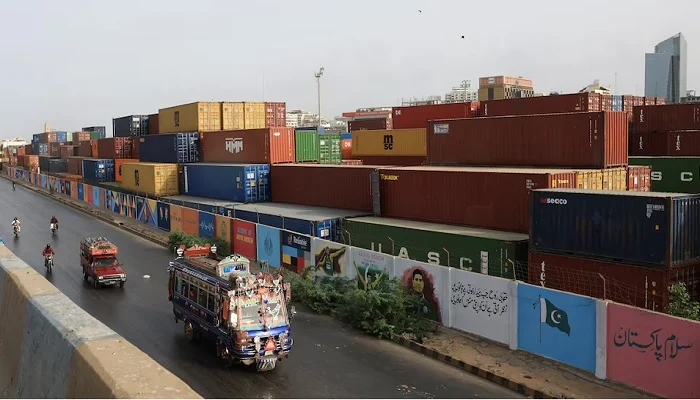The federal government of Pakistan is aiming for a sharp increase in economic growth under its annual federal budget, unveiled on Tuesday, but analysts remain skeptical about the nation’s capacity to achieve its ambitious objectives.
The budget targets higher revenues and a substantial reduction in the fiscal deficit, in line with reforms backed by the International Monetary Fund (IMF). Nevertheless, defense spending saw a 20% increase, excluding military pensions, following last month’s conflict with India.
Finance Minister Muhammad Aurangzeb stated in a post-budget press conference on Wednesday that customs duties have been reduced or eliminated on thousands of raw materials and intermediate goods. “Industry here has to be competitive, competitive enough to export,” he emphasized.
However, the drivers of this projected growth remain unclear. The government is targeting a 4.2% GDP growth rate for fiscal year 2026, an increase from this year’s 2.7%, which was revised downward from an initial 3.6% due to underperformance in agriculture and large-scale manufacturing.
“Pakistan’s GDP growth projection of 4.2% appears ambitious given recent performance, and overly optimistic assumptions may place tax targets out of reach,” commented Callee Davis, a senior economist at Oxford Economics.
Pakistan’s past periods of accelerated growth were primarily consumption-led, leading to balance-of-payments crises and subsequent IMF bailouts. The government now asserts its desire for higher-quality, investment-driven growth.
Aurangzeb indicated that structural reforms are in progress, drawing parallels to East Asia-style pro-market transitions. “This is an East Asia moment for Pakistan,” he declared.
The Rs17.57 trillion ($62.24 billion) budget is presented as Pakistan continues to operate under a $7 billion IMF program. Revenues are projected to increase by over 14%, fueled by new taxes and a broadened tax base. The fiscal deficit is targeted at 3.9% of GDP, a reduction from this year’s 5.9%.
Key reforms outlined include taxing agriculture, real estate, and retail sectors, and revitalizing stalled privatization efforts. Yet, revenue shortfalls this year have raised doubts, with both agriculture income tax and retail collections failing to meet their targets. Government data reveals that only 1.3% of the population paid income tax in 2024.
“Pakistan’s budget keeps the IMF and investors happy, even if it comes at a near-term cost to growth,” remarked Hasnain Malik, head of equity strategy at Tellimer. “The political situation also lowers the risk of protests.”
While overall spending is set to decrease by 7%, defense expenditures will rise following the worst fighting between the nuclear-armed neighbors in decades. Including pensions, defense spending will amount to $12 billion, representing 19% of the federal budget or 2.5% of GDP, matching India’s share according to World Bank data.
This increase was facilitated by a significant drop in interest payments, as the central bank lowered policy rates from 22% to 11% over the past year, thereby easing domestic debt servicing costs. Aurangzeb also noted that cuts in subsidies contributed to creating fiscal space.



